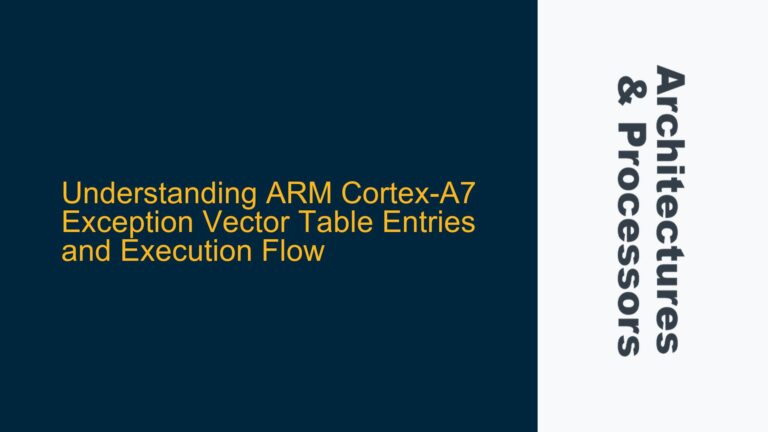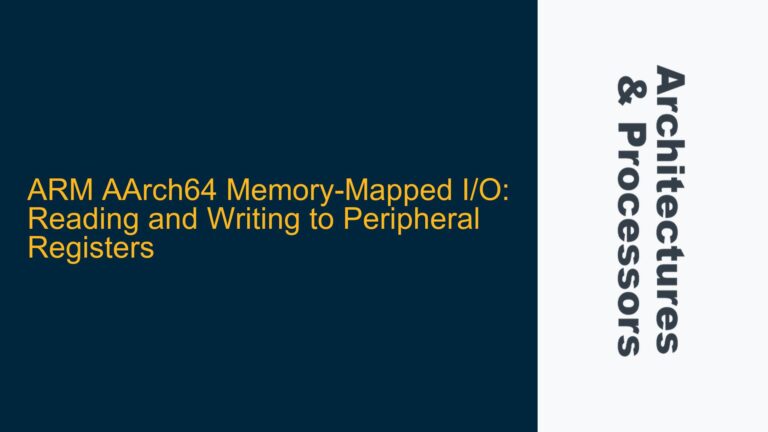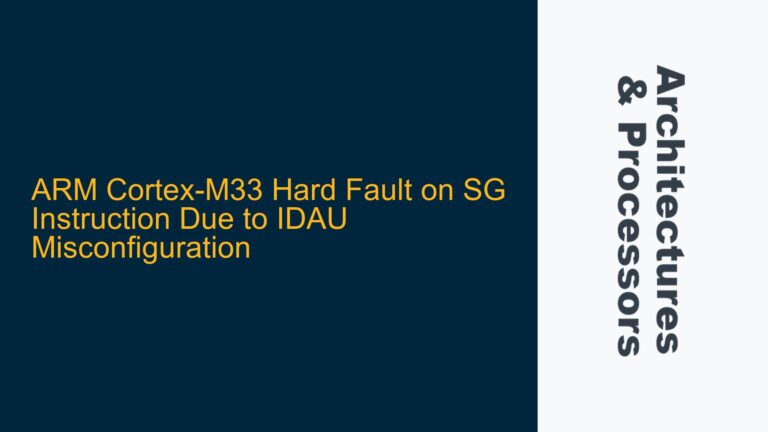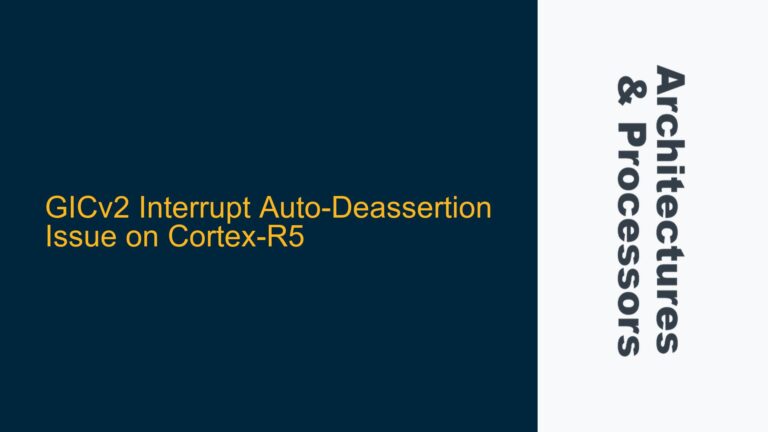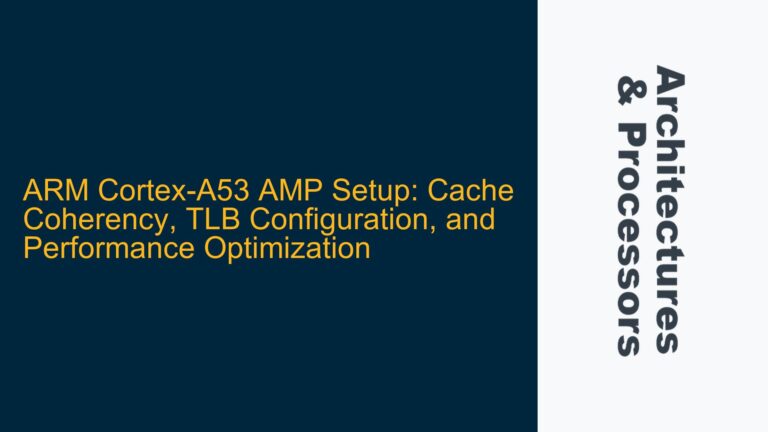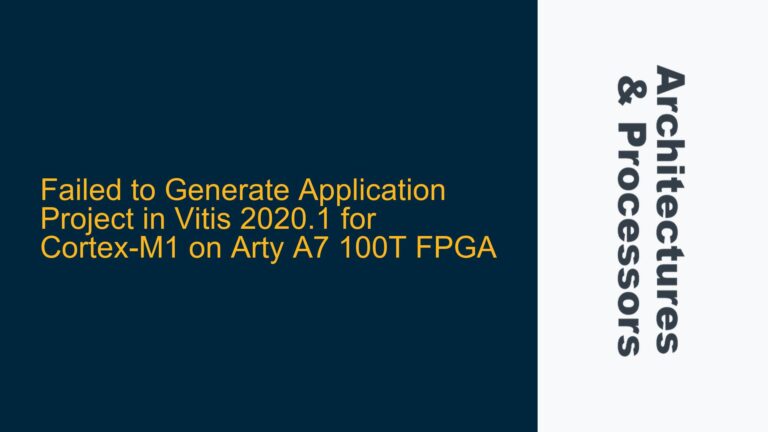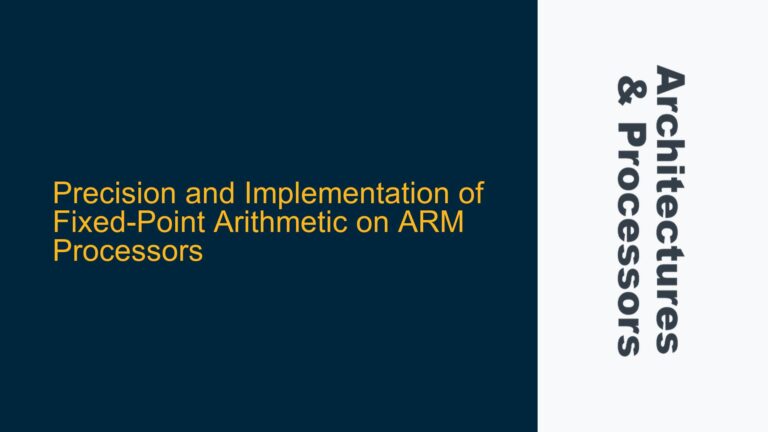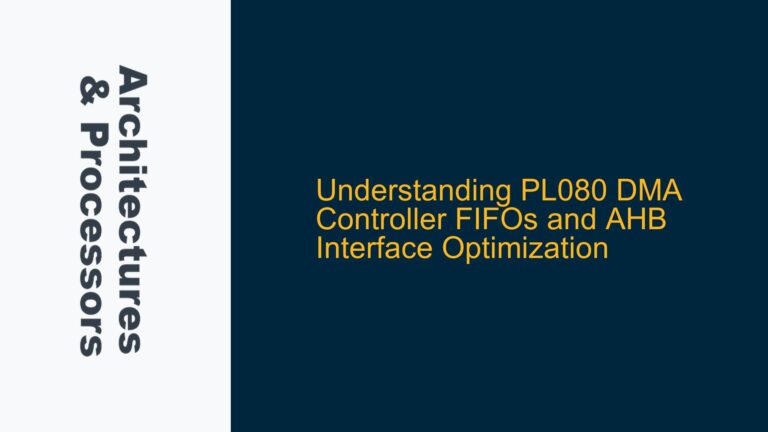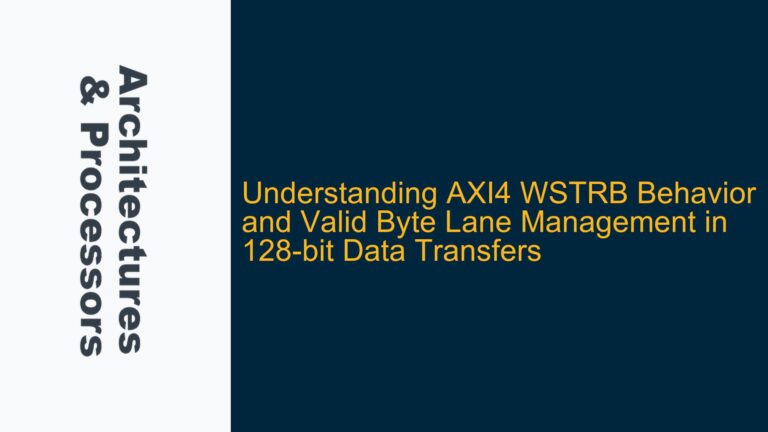ARM Cortex-A7 Exception Vector Table Entries and Execution Flow
ARM Cortex-A7 Exception Vector Table: Entries as Instructions or Addresses? The ARM Cortex-A7 processor, like other ARMv7-A architecture processors, utilizes an exception vector table to handle exceptions and interrupts. The vector table contains entries that define the starting points for exception handlers. Each entry in the vector table corresponds to a specific exception type, such…
